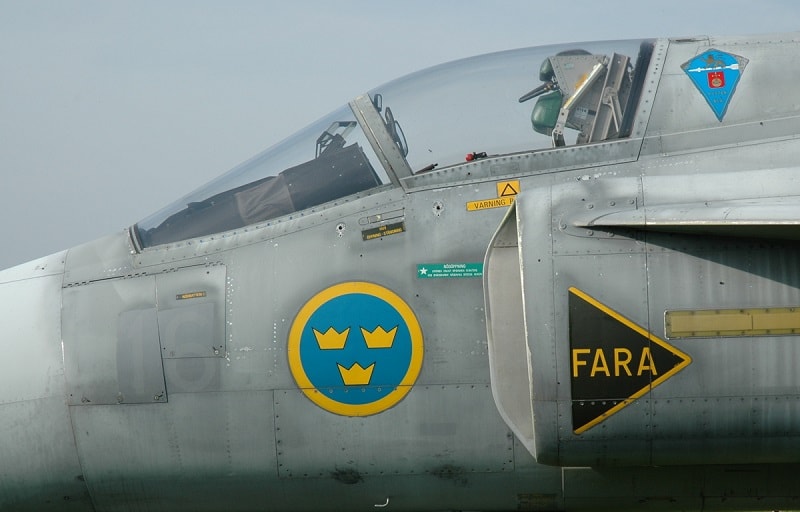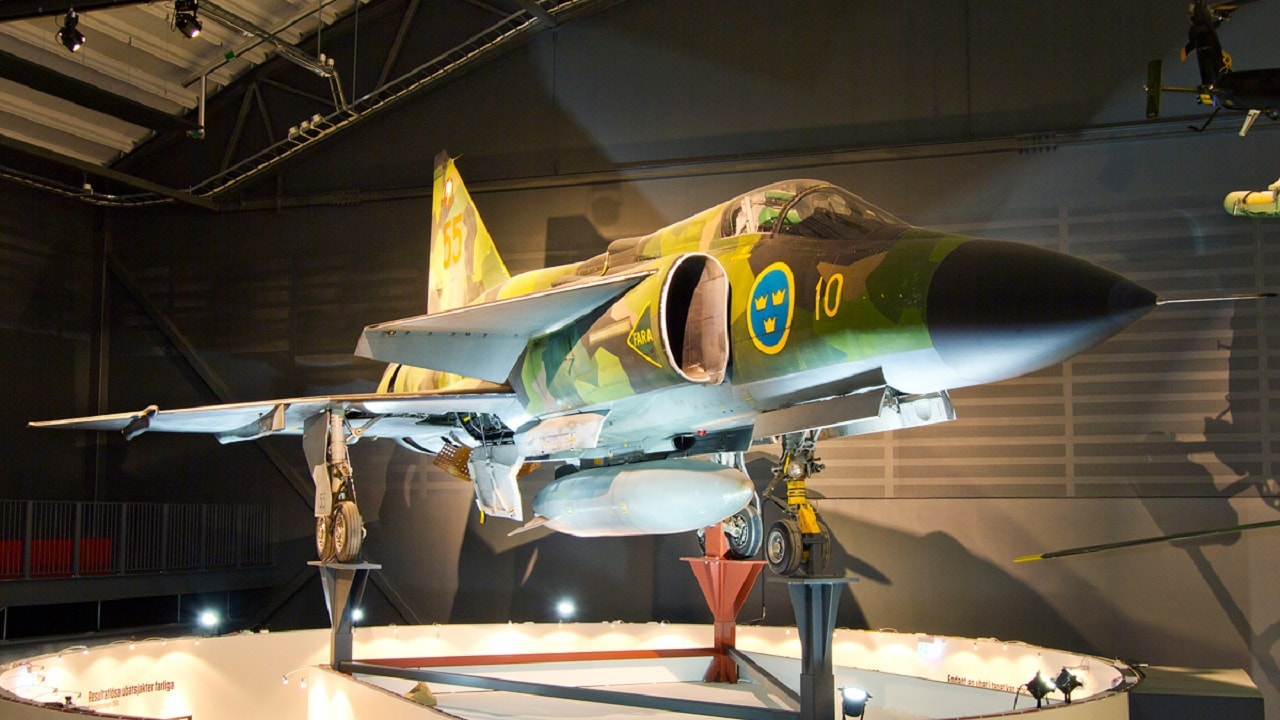Key Points and Article Summary: The Saab 37 Viggen, a Swedish aircraft from the early 1970s, is known not only for its impressive Mach 2.1 speed but also as the world’s first fighter to integrate a digital central computer system.
Key Point #1 – Decades ahead of its time, this revolutionary computing technology automated tasks typically handled by pilots, potentially serving as an early precursor to the sensor-fusion technology seen today in the F-35.
Key Point #2 – Additionally, the Viggen pioneered advanced datalink systems and STOL (short take-off and landing) capabilities. Remarkably, it even achieved a target lock on the famously elusive SR-71 Blackbird, underscoring its sophisticated sensing and computing abilities.
Meet the Saab 37 Viggen: The Forgotten Fighter Jet That Locked an SR-71
Most military observers and aerospace enthusiasts are familiar with the fact that the 1960s-era SR-71 Blackbird remains the fastest-known plane.
The available specs remain pretty clear, and the SR-71 hit an unprecedented speed of Mach 3.2.
This fact remains quite staggering today to a certain extent when one considers that the F-22 and Russian Su-35 max out in the Mach 2.2 to Mach 2.25 range.
What technologies evolved so much all those decades ago that an aircraft capable of Mach 3.2 could exist?
Sure enough, Lockheed is now building the often discussed SR-72 “Son of Blackbird” aircraft intended to fly at Mach 6, twice the speed of the SR-71. At Mach 6, the SR-72 will hit hypersonic speeds.
Meet the Saab 37 Viggen
Much of this is known and widely discussed, yet a lesser-known but astounding development took place in the early 1970s, not long after the SR-71 first emerged.
The Saab 37 Viggen, a Swedish-built multi-role aircraft, reportedly was capable of hitting speeds of Mach 2.1.
This is quite impressive, given that its first flight was in 1971, making it an aircraft that operated during the same timeframe as the SR-71.
The Saab 37 appeared in many variants and operated as a fighter-bomber, reconnaissance aircraft, maritime patrol platform, and air attack or “strike-fighter” role.
An ability to survey the ocean at those speeds or conduct airstrikes at this point in history likely made the aircraft extremely survivable.
Digital Central Computer for Saab 37
However, the Saab 37s speed was not the aircraft’s most impressive or defining element, as it was also the world’s first-of-its-kind digital central computer.
Early computers were, of course, emerging at this time, yet what remarkably places the fighter decades ahead of its time is its computer automation.
While likely far less advanced than current computer automation used across a wide variety of military platforms, the Saab 37 was engineered with technology automating tasks typically performed by pilots, according to an interesting write-up in plane-encyclopedia.com
“Viggen incorporated the CK 37 (Centralkalkylator) computer, the first airborne computer with integrated circuits, This system would end integrating radar, air-defence screens (Stril 60), and computers, and the Viggen were intended to be the platform for such a system. This system made the aircraft extremely advanced in comparison to other designs,” the essay states.
F-35 Influence?
This migration from integrated radar to digital computer and air defense screens indicates it may have been a decades-early “precursor” to the F-35s sensor-fusion.
Sensor fusion is a pioneering technical effort to incorporate, organize, and display incoming vital data on a single screen for pilots to view.
This consolidated otherwise disparate sources or displays of incoming information and synthesized them to one another.
Could the Saab 37 have been the earliest iteration of this approach?
It seems feasible, as it is known as the first aircraft with a digital central computer.
The essay also introduces other extremely significant developmental reasons why the Saab 37 Viggen was ahead of its time. It pioneered an advanced datalink system the famous Swedish JAS 39 Gripen fighter jet could later incorporate.
The Saab 37 was also capable of “short-take-off-and-landing,” something which one could say may have influenced the Harrier Jet or even the F-35B.
This Fighter Locked an SR-71 Blackbird
An interesting essay in The National Interest from 2024 says there was a point at which a Saab 37 Viggen successfully achieved a target lock on an SR-71 over the Baltic Sea.
This may have something to do with the kind of computing and sensing now woven into the F-35.

Closeup view of the cockpit and air intake of a Saab 37 Viggen.
About the Author: Kris Osborn
Kris Osborn is the Military Technology Editor of 19FortyFive and President of Warrior Maven – Center for Military Modernization. Osborn previously served at the Pentagon as a highly qualified expert in the Office of the Assistant Secretary of the Army—Acquisition, Logistics & Technology. Osborn has also worked as an anchor and on-air military specialist at national TV networks. He has appeared as a guest military expert on Fox News, MSNBC, The Military Channel, and The History Channel. He also has a Masters Degree in Comparative Literature from Columbia University.

